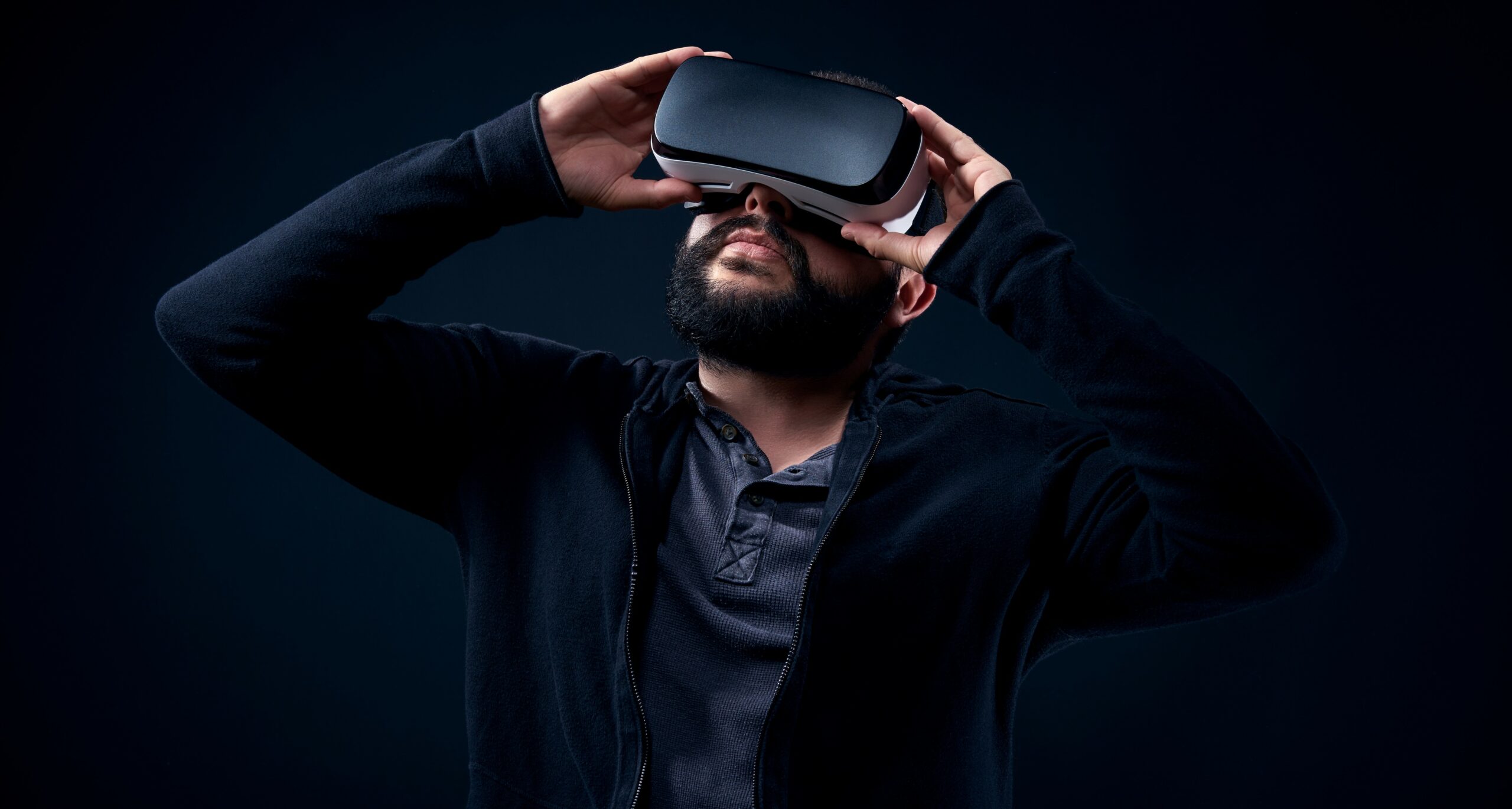EDITOR’S NOTE: This is the third of a multipart series exploring sexual harassment prevention in the workplace. Read part one: “Training Not Enough to Prevent Sexual Harassment” and part two: “Sexual Harassment Prevention Starts With Leadership.”
Companies spend big bucks on sexual harassment training that doesn’t seem to be working. The fact is, many firms don’t go far beyond symbolic compliance or “check-the-box” training. Morgan Mercer, founder and CEO of an emerging company that provides sexual harassment training through virtual reality, wants to change that.
“We really need to take not only a more global level of accountability in terms of bystander intervention, but we need to be willing to work together as a community to progress society,” Mercer said. “It’s going to take a level of forgiveness. But if you’re willing to learn, then let’s move forward together.”
As a two-time survivor of sexual violence, Mercer said she realized that society doesn’t know how to respond to the problem of sexual violence or harassment. “There’s really no training around that,” she said. So she created Vantage Point to address the problem.
How It Works
Using 360-video, Vantage Point VR training has three core models: identification of sexual harassment (what it is, how to identify it and how to report it), bystander intervention (how to speak out or provide support) and response training (how to respond if it happens to you).
Employees go through self-scheduled 30-minute cycles and reported compliance data is automatically sent to the HR department. One employee at a time enters the VR experience and begins in the virtual lobby. Each room is a different module and the employee decides which one to enter first. “The scene kind of unfolds around you,” Mercer said. “We’re testing for various levels of your ability to assess the situation, your ability to identify what’s appropriate for the workplace and what isn’t, your ability to identify opportunities for when and how to speak up.”
Next, the trainee receives a haptic cue. In the bystander intervention module, the controller vibrates and a text message on a virtual cell phone appears. The text is from a co-worker across the room and it could say something like, “That joke seems really weird and Amy looks uncomfortable. Should he be saying something like that?” Then there are auto-suggested responses with associated ratings that are assessed later.
The story then unfolds based on what the trainee chooses to text back. At the end of the training the user goes into an “empathy scene” where they examine how or why they made the right or wrong choices.
“Somebody says, ‘Hey, this is what happened to me and I really think he was serious about it. What should I do?’ And we give you the opportunity to respond with empathy,” Mercer said. “Then, based on your choices there, you receive a phone call that says, ‘Here were the opportunities where you could have intervened. Here’s how you could have responded more empathetically, and now we’re going to take you back through the experience and we’re going to allow you to do it again.’ ” This time, when the user sends a text message back choosing their path, they receive automatic feedback based on their responses.
Data is then gathered on aspects of the training, such as the text responses selected and how long it took to respond. Mercer said that for each user they can also identify what parts of the training light up different regions of the brain associated with memory, cognitive recall and empathy.
In April, Vantage Point launched its public-facing beta and put at least 2,000 people through the experience. Mercer said almost every trainee makes the wrong decisions. That is, they don’t choose the right text messages and choose not to intervene when it’s necessary. “A lot of times, the compliance regulations only require that training programs truly teach you how to identify sexual harassment, but training programs aren’t actually required to really go beyond that,” Mercer said. “There’s a fundamental lack of education.”
The firm will continue to add content as it grows. Mercer said as they test the content, they hope to identify what concepts need to be learned in tandem or supplementary to the existing training to help encourage information recall and information transfer. “For instance, if learning about normalization of jokes or ‘locker room culture’ leads to a higher tolerance of harassment, and in order for users to be able to most accurately identify sexual harassment, we will develop content around that topic and teach it in tandem,” she said. “The beauty of the medium is that we are able to identify how engaged users are, what content they are engaging with, and how that maps out to various centers of their brain and can juxtapose that with longitudinal studies of information recall to identify pain points and areas of opportunity.”
Finance company Tala has signed on to pilot the program, and Mercer said several other companies will either pilot in Q2 or implement the solution in Q3 or Q4. As for the cost, Mercer aims to align with existing pricing of sexual harassment trainings, which cost between $29 and $75 per person. There would also be one-time fees for implementation and hardware, she said.
In August 2018, Vantage Point announced a seed funding round of $1.3 million led by The Venture Reality Fund. Funding also came from technology institutional investors including Village Global, Colopl NEXT Fund, M Ventures, Anorak Ventures and Josh Resnick, who sold his company to EA Games for $900 million. The investments will go toward product development and hiring. The company plans to officially launch its platform in late August.
Why VR?
Sexual harassment trainings historically may have included standard videos, PowerPoint presentations, handouts, lectures and discussions, but Mercer said there’s no way to train against sexual harassment in reality. She said VR aligns with research on state-dependent learning, which asserts that when someone is learning, they should learn under the same conditions they would be in if the situation were to occur. “The closer you can get to the conditions you’ll be placed under, the more accurate and faster your response time will be in real life,” Mercer said. VR training produces up to a 90 percent retention rate versus existing training programs, she added.
Mark Matthews, a marketing strategist at NEXT/NOW, a digital agency focused on VR technology, said one of the major appeals of VR is that it is the only way you can put someone in another person’s shoes. “[VR] absolutely gives you that ability to see through someone else’s eyes and go through those experiences,” Matthews said. “The true power of virtual reality is that somebody can put on a headset one way and come out a totally different way. It is that affecting.”
Matthews said he appreciates Vantage Point’s efforts to mimic real-life scenarios, but he thinks the training could really excel if they could put the user in the position of the one being harassed. “The text message approach is a little indirect for me,” he said. “If you coupled that with the opportunity to also be that person that was talked to inappropriately, I think there’s a way you could garner some real empathy there.”
Matthews acknowledged there could be ethical issues that arise in how far to take the virtual harassment, but he said the best way to enlighten people to the problem, especially for men, is by putting them directly in others’ shoes to experience something they might not have otherwise. “A lot of stuff that goes on with sexual harassment or even racism is because many people don’t perceive the problem because they don’t run into it very often,” he said. “Something amazing about the #MeToo movement was that there were so many women who came forward that you could no longer deny it.”
While Mercer agrees most men who harass do not have a mental reference point from which to pull, she said rather than forcing all to experience harassment, they would rather employ tactics that encourage all users to be empathetic toward those who might experience it and reinforce the emotional, psychological and career consequences that victims of harassment might face.
“We believe there are other, more tactful, ways to employ empathy,” she said. “Theoretically, men have or may have experienced harassment, too. Incorporating this would risk potentially victim-blaming. We don’t want to level the playing field; we want to raise the bar.”
This story was updated in August 2018 to include funding developments for Vantage Point.















